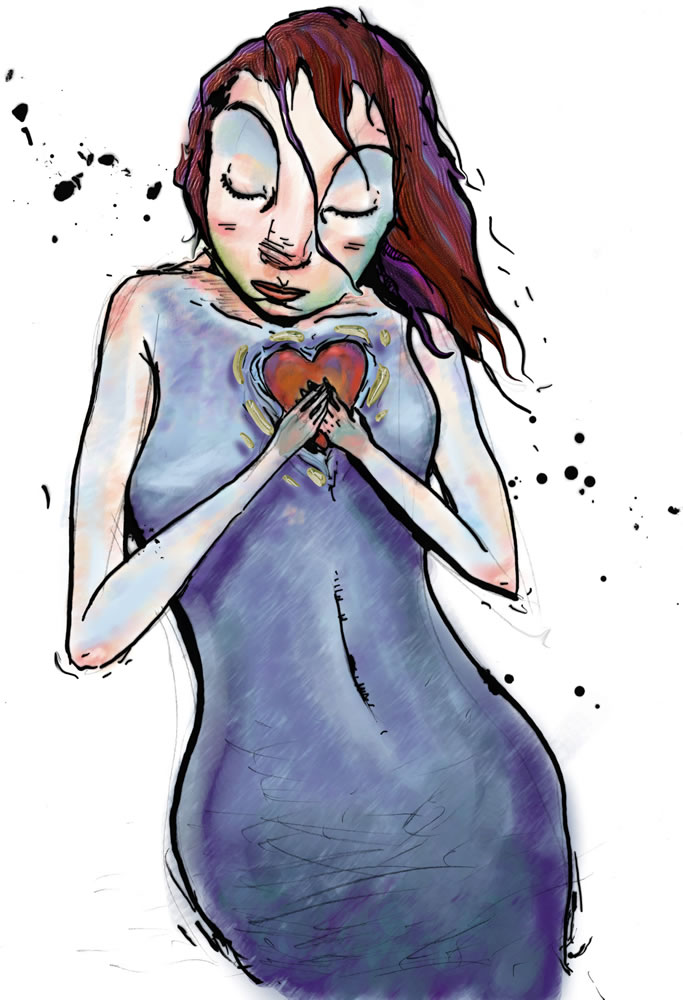Sarah Batts minded her diet. She exercised regularly. She made sure her waistline never exceeded 35 inches.
She was, she says, a health nut, and she had reason to be. Both her father and an older sister, who at age 50 had stents placed in her heart, had suffered heart attacks.
And yet, Batts, 41, said she always thought of heart disease “as my father’s disease. I didn’t think of it as a young woman’s disease.” In fact, mere mention of a “heart attack” conjures up images of pudgy, middle-aged men clutching their chest. Yet cardiovascular disease is the leading killer of women over age 25.
And while chest pain is considered the hallmark symptom of myocardial infarction, commonly known as a heart attack, women don’t always experience that type of pain and so are more likely to die of a heart attack than men, said Dr. Chuck Ballard, an interventional cardiologist with Piedmont Heart Institute.
In 2008, the last year for which statistics are available, Ballard said that more than 10 times as many women — 420,000 compared with 40,000 — died from cardiovascular disease as from breast cancer. The same year, 392,210 men died from cardiovascular disease.
“Though no one wants to downplay how serious breast cancer is, in real incidences heart disease is by far more common,” Ballard said. “It kills more women than all forms of cancer combined. One in two women die of heart disease, whereas one in nine die of breast cancer.”
Then in July, Batts found herself in a fetal position on the floor of her Atlanta living room with excruciating jaw pain, pain she had ignored for weeks, associating it with running.
Even when Batts, director of development for Piedmont Healthcare Foundation, finally went to the hospital emergency room, it was only because a friend insisted, she said recently.
She was in Piedmont Atlanta Hospital’s cardiac observation area when she had a heart attack.
“That’s what really saved her,” said Ballard, who treated her. “Her artery was open within an hour of her heart attack.”
Know the risk factors
When Batts arrived at the emergency room, her blood pressure and EKG were normal. Her cholesterol was in a good range and so was her weight. “I wanted to go home, but the doctors insisted I stay,” she recalled. “They were monitoring me when they realized that I was having a heart attack.” Doctors could see her coronary (heart) arteries with a dye they injected into her blood. Her right coronary artery was 99 percent blocked.
According to Ballard, “You could have all your heart arteries 80 percent blocked and have a normal EKG until a heart attack occurs.” Batts clearly had. In fact, he said, one in three female adults have some form of cardiovascular disease, including hypertension, stroke and coronary artery disease.
While doctors are seeing a rising trend among younger women such as Batts, Ballard said that genetics is clearly the strongest single risk factor for both men and women. Complications during pregnancy such as preeclampsia, gestational diabetes and collagen vascular disease (rheumatoid arthritis, for example) are also important risk factors in a woman’s personal history.
Given the vagaries and challenges of diagnosis, he said, it is crucial for women to pay attention to their own bodies and be aware of heart attack symptoms, including chest pain, nausea, shortness of breath and fatigue.
“Those should be loud alarm bells,” Ballard said.
Batts said it is important for women to listen to their bodies and know their blood pressure, cholesterol and triglyceride levels.
“This is a silent disease. It is not a disease that you can see,” she said. “It takes out a lot of women. It takes out young women, and we don’t present in the normal way. It’s not always the giant elephant on the chest.”
A week ago, Batts said, she went for her first run in the cardiac rehabilitation center. “I just wanted to shout with joy when I finished.”



